- Home
- Ray Bradbury
Yestermorrow
Yestermorrow Read online
YESTERMORROW
Obvious Answers To Impossible Futures
Ray Bradbury
New York, 2017
Yestermorrow
Copyright © 1991 by Ray Bradbury Enterprises
All rights reserved. No part of this book may be used or reproduced in any form or by any electronic or mechanical means, including information storage and retrieval systems, without permission in writing from the publisher, except by a reviewer who may quote brief passages in a review.
Electronic edition published 2017 by RosettaBooks
Cover design by Christian Fuenfhausen
ISBN (EPUB): 9780795350498
ISBN (Kindle): 9780795350504
www.RosettaBooks.com
For
WALT DISNEY
who started me on this
journey when I was seven,
and to
all the others who helped me
continue the journey at Disney Imagineering:
ROY DISNEY JR., JOHN HENCH, JOHN DECUIR JR.,
MARTY SKLAR, VAN ROMANS, MARC DAVIS,
and TIM DELANEY.
and
JON JERDE
who convinced me, late in life,
that I was some sort of
creative consultant,
and
JODY GREENWALD
who dropped me on wires down out
of the Shubert Theater flies to
land me in a world of Designers,
and
CAROL SOUCEK KING
and WALTON BROWN
who caught me and tossed me
into the pages of Designers West,
to all, my gratitude and love…
CONTENTS
THE VOYAGE TO FAR METAPHOR AND ELEPHANT INDIA: A PREFACE
FILL ME WITH WONDER, YOU ARCHITECTS
ART AND SCIENCE FICTION
THE GIRLS WALK THIS WAY; THE BOYS WALK THAT WAY
THE AESTHETICS OF LOSTNESS
WHO OWNS WHAT AND WHICH AND WHY
TO BE TRANSPORTED
THE GREAT AMERICAN “WHAT AM I DOING HERE, AND WHY DID I BUY THAT?” HARDWARE STORE
THE AESTHETICS OF SIZE
YESTERMORROW PLACE
YES, WE’LL GATHER AT THE RIVER
GO NOT TO GRAVEYARDS
DAY AFTER TOMORROW
THE RENAISSANCE PRINCE AND THE BAPTIST MARTIAN
FEDERICO FELLINI
THE HIPBONE OF ABRAHAM L.
MOVIOLA MICKEY
BEYOND 1984: THE PEOPLE MACHINES
THE GREAT ELECTRIC TIME MAZE
A FEASTING OF THOUGHTS, A BANQUETING OF WORDS
SCIENCE FICTION: BEFORE CHRIST AND AFTER 2001
GRAND TOUR 2484
OF WHAT IS PAST, OR PASSING, OR TO COME
AN AFTERWORD BY JON A. JERDE, AIA
ACKNOWLEDGMENTS
YESTERMORROW
The Voyage to Far Metaphor and Elephant India: A Preface
These essays were written mostly under the drunken influence of my dawn voices, my theater of morning, as I call it.
Any owner of cats will know of what I speak. Cats come at dawn to sit on your bed. They may not nip your nose or inhale your breath or make a sound. They simply sit there and stare at you until you open one eyelid and spy them there about to drop dead for need of feeding.
So it is with ideas. They come silently in the hour of trying to wake up and remember my name. The notions and fancies sit on the edge of my wits, whisper in my ears and then, if I don’t rouse, give more than cats give: a good knock in the head, which gets me out and down to my typewriter before the ideas flee or die or both.
In any event, I make the ideas come to me. I do not go to them. I provoke their patience by pretending disregard. This infuriates the latent creature until it is almost raving to be born and once born, nourished.
I subscribe to the Big Bang theory.
Which is to say that if there isn’t one Big Bang each day in my life I feel ignored and bereft. If the right side of my brain rolls over and grabs a snooze on my left, I immediately run, jump in a desert pool until the old brain divides in proper halves.
What we have here then in this book is a menu of Big Bangs, which may well be small pippins and stale popcorn to you. What does not fill your mind and propel you to the typewriter, drawing board or computer, may well have filled and driven mine.
My plans for hardware stores, mouse museums, and camera obscura-photo-display-histories of artists and their palettes have been lying there like electric sockets waiting to shock for dozens or scores of years. I’m glad I happened to be the one who wet his thumb, shoved it in a creative socket and received a shock. With my hair upended I ran to my typewriter for further jolts. Each shock, each jolt, is recorded herein.
All that being true, what is my background?
Back around my thirteenth or fourteenth Christmas, my folks ruined the day. How? By giving me sweaters, socks, shirts, and several ties I wanted to hang myself with by the end of that dreadful, dull December morn.
“Don’t ever do that to me again!” I shouted. “Toys is what I want, dammit! Toys!”
My shout has continued every Yuletide since. I have had to train my wife and four daughters, and all of my friends, to do birthday and Christmas shopping for me only at Toys-R-Us or F.A.O. Schwarz. My basement workshop and my typing office are littered with magic sets, robots, Godzillas, masks, dinosaurs and—leapin’ lizards!—an eight-foot-tall Bullwinkle that used to stand in the window of the Rocky and Bullwinkle Emporium on Sunset Boulevard.
One of my closest friends is Stan Freberg, America’s greatest non-stop humorist. When I murmured “Xanadu!” on entering his palatial home for the first time, he ran down in the basement and ran back up with a sled on which “ROSEBUD” was painted in great flourishes.
My first stories, at age twelve, were written on a toy. One of those tin dial typewriters with a circular, rotating alphabet that you turn and press down, taking roughly half an hour to do one or two paragraphs. But rotate, press, rotate, press I did, and writer I became.
How come this madness, early and late, for toys? Because I early-on sensed that they, like poetry, were essences of things, compacted symbols of possible or impossible lives. In sum, I absolutely knew that metaphor was all and everything! Metaphors for breakfast, by God. Sugar and cream ’em, spoon ’em down!
I was reminded again, during the Statue of Liberty celebration, that without metaphor we cannot understand, we cannot comprehend, we cannot know ourselves, or others. The gift of being able to compact experience, life, into convenient packets, is pivotal. Without the gift, we would be a-sea in doubts, and miscomprehensions. With it, we know who we are, and can tell one another, hoping that it is true. To sense, to know, to say at the age of twelve or twenty: I am a writer, I am an artist, I am an actor. Not maybe or hope to be, but I am right now!
My gift, if I have one, is on occasion to sit in with groups, sometimes with museums, sometimes with corporations, to tell them who they are. To, in effect, solve their puzzlements, find their metaphor. Sometimes they know it all along, of course. Most of the time, in fact, they have a generalized sense of their aims. But often they have been so busy doing what they do, that they cannot easily hang a proper label on themselves. I must come along, then, as an amiable observer to take notes and make sums.
I am, then, the master of the obvious. Once I drum up a label, spell them their metaphor, everyone says, “Of course! Good Lord, that’s exactly what we are! How come we didn’t see that? Or, seeing it, shout it!”
Thus my subtitle: Obvious Answers to Impossible Futures. Which means, further, that one of the reasons I enjoy going through a toy factory is that I am surrounded by nothing but metaphors. Celebrations of joyful concepts. Blue
prints and dreams extruded forth in three-dimensional form. Which is not to say that all factories are not manufacturing metaphors; they are. A rifle, or a cannon, is a metaphor for men throwing rocks. What started out at the mouths of caves, extended itself more violently in men’s heads, and then into machine shops and ammunition powder mills, where the art of throwing things refined itself. So a few feet or a few yards became a thousand yards or five miles. But the dream of the distance and the energy needed had to come first. The unborn metaphor.
A computer factory is a metaphor for a new kind of library, is it not? True, computers do not look like books, but that is what they are; mechanical folios that hide symbols in their electronic brains and print them forth when we need books, very small or very large.
The Viking Lander on Mars is a toy grown to large size, a metaphor of a dream; that dream of extending our will, our hand, our seeing eye to another world. It is not a machine, it is us. All metaphors are us whether they exist in two or three dimensions or as pure sound or music.
But, as I say, I far prefer the factory of toys, for obvious reasons: I, like all men, have never grown up. Other men lie and say they have. I refuse to lie. I try to be a creative child, using my immaturity in such ways as benefit my society rather than harm it.
For it is men who inhabit toy shops to buy the toys that women think are foolish—monorails, trains, planes, laser guns, computer games, tanks and artillery—while women drop in to buy dolls for their children. They have few needs for the kind of toys that men love and invent and grow to large size to fill our cultures if not necessarily our civilizations. After all, women are born to have living dolls, children to whom they become mothers and teachers. If they choose. If they wish, I might add hastily. It’s up to them. If they choose not, then they must join the long line of men seeking jobs. For men come into the world naked, with no prime creativity. We men are secondary creators. We cannot create life. We can help instill it, but there our function ceases. We are left unclothed, jobless and seeking our future in toys. We fill our garages with dreams and then open the doors and let out the first paperbag Montgolfier balloon, the first Ford, the first Kitty Hawk bicycle-become airship, the first large-eared mouse named Mickey, the first Pasadena college rocket-team, Von Karmen’s students, who sprouted the Jet Propulsion Lab for space-traveling, the first Wozniak Apple to be polished in Silicon Valley. All toys, self-inseminated, in garages and let loose in gargantuan form to change the world. Toys. Toys.
We are all in the same business, are we not? I make symbols on paper to explain the three-dimensional symbols that leap, roll, dance, and sing out of your manufactory halls.
And it follows that if I do not love and have fun with my ideas, and if you do not do the same, I will write bad stories and you will make bad toys.
I suppose another convenient cross reference might be the concrete mixer. You toss all the ingredients in, mix with water, pour, and let harden. What you get is something other than what went in. Surprise!
That is the element we all hope and pray for. To surprise not only others, but ourselves.
The proper recipe would seem to be, for a writer of stories, or deviser of toys, to toss as many images, as many aspects, as many notions about your family, your city, your country, your other arts, and your times, into your head; through your eyeballs onto your retina, into your ears vibrating your tympani, excruciating your fingertips, provoking your nostrils, exciting your taste buds. From this complete education, this overflow of stimuli, must come some sort of provocative explosion—this thing we call creativity.
When I was a boy, the toys that were metaphors for Outer Space were few and far between. On occasion, in the thirties, Cocomalt would offer some new Buck Rogers gadget—mainly a decoder button or ring—but very rarely a disintegrator. And, hell, what has a disintegrator to do with rockets and star travel? You could buy a Buck Rogers rubber-stamp outfit when you were fourteen, wherewith to ink and stamp out your own twenty-fifth century comic strip. But real spaceships, stamped out of tin, were many years off and beyond. The dream of space had not as yet hyperventilated the society, and therefore had caused no heavy breathing at the toy factories across the world.
Today the world is flooded with toys that represent today, tomorrow, and the worlds beyond tomorrow. The country of Japan, our 51st state, is nuttier and crazier about toys, spaceships, robots, laser guns, than we are. Bigger, brighter, quicker, louder, here come the Japanese running with their Godzillas and Walkmen, taking pictures of themselves taking pictures of themselves taking pictures of themselves until they vanish up the backside of a VHS videocassette unit. This last toy, and toy it is, will change the history of our world—and the history of education, if we have the wits and the imagination to use it. For this toy will make available to all the schools of the world, thousands of documentaries on hundreds of subjects, unseen until now, save to members of the Documentary Committee for the Academy Awards. I was on the committee for eighteen years and saw 90 hours of film each January, in order to choose a winner. These incredible films, cheap now by the dozen, can be transported and flung from side to side of our continent, to be used as teaching hand grenades. Recipe: toss one into a videocassette classroom, and allow it to explode students into curiosity and thus creativity. What a toy!
But I have gone on a long while here, and there are dozens of things left unsaid. I close by pointing to the obvious fact, again, that we are all working at the same job.
As I said to a group of Union Bank officials last year, “I hope you people don’t think you are in the business of making money!”
There was a moment of stunned silence.
Before anyone said anything I went on: “You’re in the business of predicting the future. If you predict it well, and act on the prediction, then and only then will you deserve and have a profit.”
So there you have it. Banks, films, paintings, agriculture, toys. We share the commonality of dreams, which we name tomorrow.
We are busy, as Wordsworth put it, weighing the mischief against the promised gain, measuring malice against the possible good.
Wordsworth said it, but there were others before him who both welcomed and doubted the various devices as they came into the world.
But only when the flood of the Industrial Revolution reached full tide did we begin to speak our fears by the day and hour. Looking at all the so-called advances or the implied retreats brought on by the locust invasion of machines, we tried to weigh the mischief of each and at the same moment place on the scales the promised gain.
We have continued to balance the scales, ask the questions, with increasing dubiety and increasing gratification ever since.
What will the videocassette do to the world? Do we retreat to plain old TV? What will TV do to the world? Do we go back to cinemas? What will cinema do to the world? Do we run back to radio? What will radio do to the world? Do we shrink back to vaudeville and stage? Or exit to the streets for mere carnivals and sideshows? Until at last, safe in our caves, we stare out at a world of retreats and wonder why the immense gain became a cowardly loss? How does one balance those scales?
Each time we dream a new dream, blueprint a new blueprint or extrude into three-dimensional form some new electronic or mechanical technology, we birth at the same instant the Beast of Iniquity and the Angel of Mercy.
Both are imbedded in our notions of how to improve the world, how to re-invent God and God’s ways and God’s by-products. If we look upon ourselves and the Garden as excluded, we think we know better. If we find ourselves brothers to Christ, we think everything’s okay. We sometimes forget to consider that in a single walnut shell, good and evil, like yang and yin, eat each other’s tails. Even Christ, as desert tourist for 40 days and nights, had to yell the dark blood out of his system.
So when we strike the rock, not only wine comes forth, but toxic wastes.
I have two Godzillas in my basement. One, I gave to my daughters fifteen years ago, and took back when I saw they did
n’t love it as much as I did. The other, larger, painted white and with two dozen candles sprouting from his spinal column, was a gift from the Mattel Company on my 59th birthday.
I worked with Tokyo Movie Shinsa on an animated film called Little Nemo In Slumberland, some years back. It was sheer happiness, of course, for the Japanese delight in inventing newer and ever more miraculous toys that make da Vinci and Edison look like Abercrombie and Fitch. Whenever our language difficulties got too onerous, they or I would dig out some new wind-up-or-batteries-included beast, toss it on the conference table and laugh. Berlitz should know what we found in laughter as language.
Well, there you have it, haiku, sonnet, film image, Plato’s cave and all. Plato, in his Dialogues, spoke of the images on the walls of his special cave being symbols of some outside world, to be interpreted differently in each head, each cave with inward eyes, which represents individual men and women trying to figure out the meaning. The glory of our age is our ability to trap and project those dreams on walls and in computer screens, encapsuled fancies that will travel, in electronic suitcases, along to Mars and beyond.
I end as I began, remembering my number two daughter, Ramona, who once said at age four, “Give me a gift and I’ll eat it and eat it!”
To which I add, “Give me a gift and I’ll keep it and keep it and wind it and run it down here on the floor, to the end of my days!”
I end also with the memory of a Sausalito toy shop where I lingered a few summers ago. On the way out a gang of boys ran by. One boy lingered, staring in longingly at the bright objects.
“Go in,” I urged, “now, run in, stay.”
“Aw, come on!” the boys urged, “that’s kid stuff! C’mon!”
“No!” I whispered, my head turned away. The boy hesitated, then ran off with his friends. It broke my heart.
Now, don’t you break it, too.

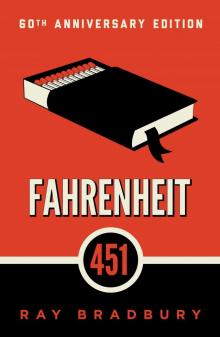 Fahrenheit 451
Fahrenheit 451 Zen in the Art of Writing
Zen in the Art of Writing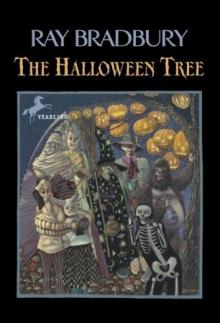 The Halloween Tree
The Halloween Tree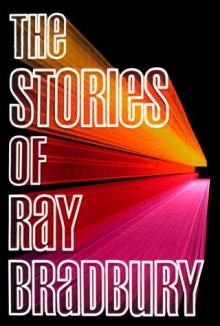 The Stories of Ray Bradbury
The Stories of Ray Bradbury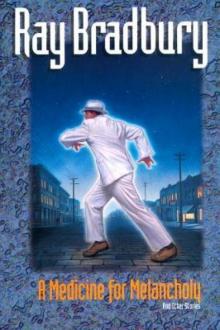 A Medicine for Melancholy and Other Stories
A Medicine for Melancholy and Other Stories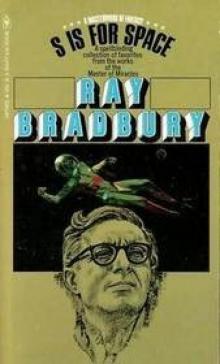 S Is for Space
S Is for Space The Martian Chronicles
The Martian Chronicles Futuria Fantasia, Winter 1940
Futuria Fantasia, Winter 1940 Farewell Summer
Farewell Summer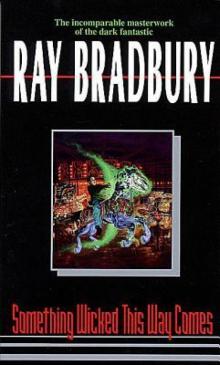 Something Wicked This Way Comes
Something Wicked This Way Comes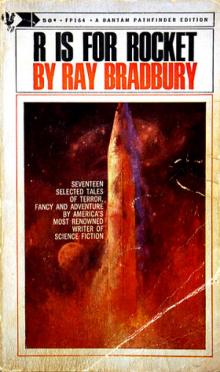 R Is for Rocket
R Is for Rocket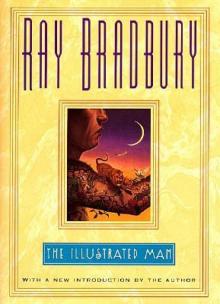 The Illustrated Man
The Illustrated Man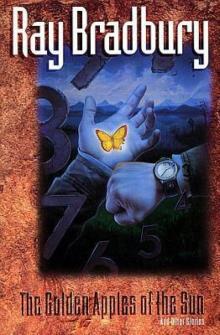 The Golden Apples of the Sun
The Golden Apples of the Sun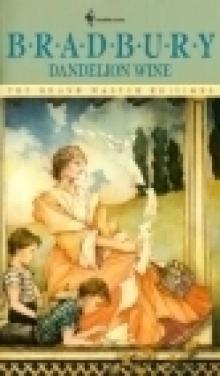 Dandelion Wine
Dandelion Wine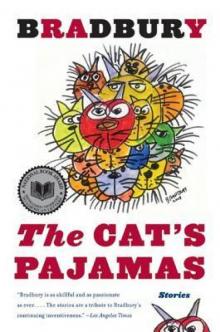 The Cat's Pajamas
The Cat's Pajamas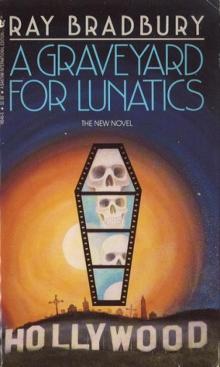 A Graveyard for Lunatics
A Graveyard for Lunatics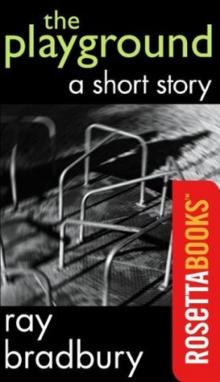 The Playground
The Playground We'll Always Have Paris: Stories
We'll Always Have Paris: Stories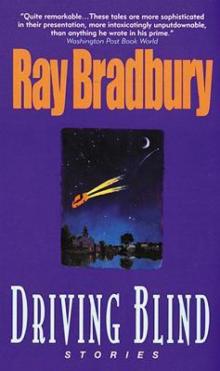 Driving Blind
Driving Blind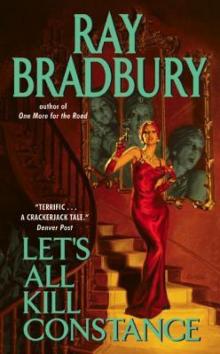 Let's All Kill Constance
Let's All Kill Constance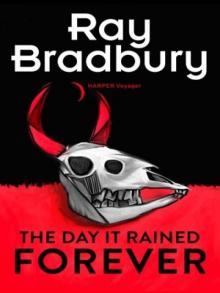 The Day It Rained Forever
The Day It Rained Forever The Toynbee Convector
The Toynbee Convector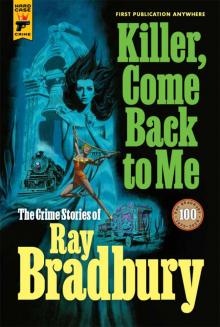 Killer, Come Back to Me
Killer, Come Back to Me I Sing the Body Electric
I Sing the Body Electric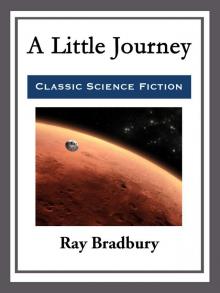 A Little Journey
A Little Journey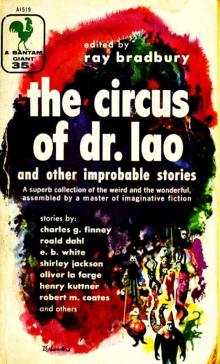 The Circus of Dr Lao and Other Improbable Stories
The Circus of Dr Lao and Other Improbable Stories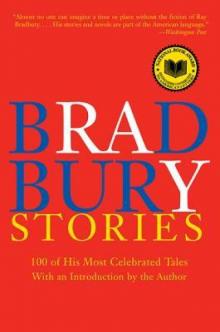 Bradbury Stories: 100 of His Most Celebrated Tales
Bradbury Stories: 100 of His Most Celebrated Tales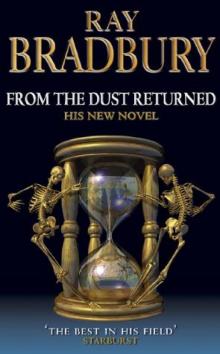 From the Dust Returned
From the Dust Returned Death Is a Lonely Business
Death Is a Lonely Business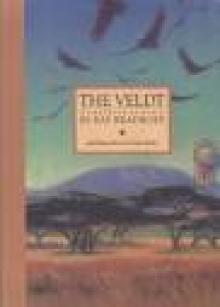 THE VELDT
THE VELDT One More for the Road
One More for the Road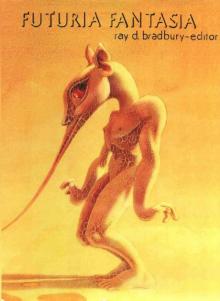 Futuria Fantasia, Summer 1939
Futuria Fantasia, Summer 1939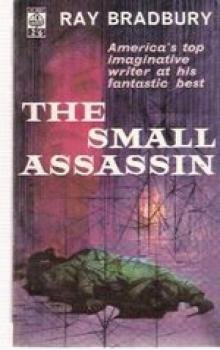 The Small Assassin
The Small Assassin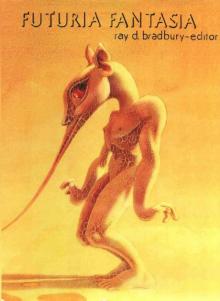 Futuria Fantasia, Fall 1939
Futuria Fantasia, Fall 1939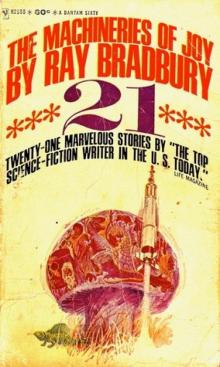 Machineries of Joy
Machineries of Joy The October Country
The October Country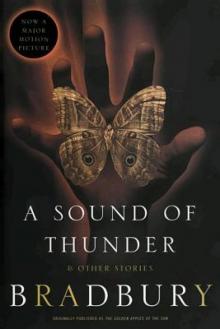 A Sound of Thunder and Other Stories
A Sound of Thunder and Other Stories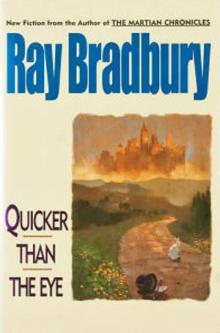 Quicker Than the Eye
Quicker Than the Eye Summer Morning, Summer Night
Summer Morning, Summer Night Yestermorrow
Yestermorrow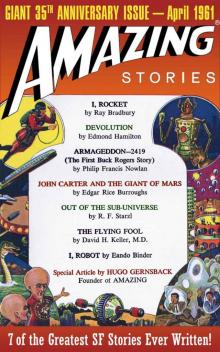 Amazing Stories: Giant 35th Anniversary Issue (Amazing Stories Classics)
Amazing Stories: Giant 35th Anniversary Issue (Amazing Stories Classics)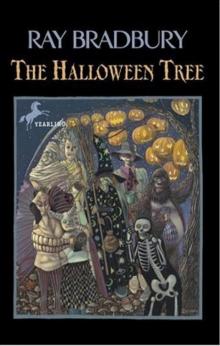 (1972) The Halloween Tree
(1972) The Halloween Tree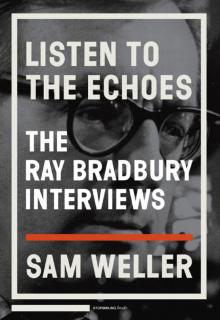 Listen to the Echoes
Listen to the Echoes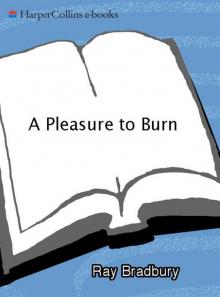 A Pleasure to Burn
A Pleasure to Burn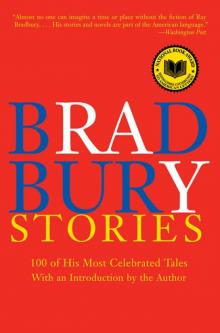 Bradbury Stories
Bradbury Stories Bradbury Speaks
Bradbury Speaks Ray Bradbury Stories Volume 2
Ray Bradbury Stories Volume 2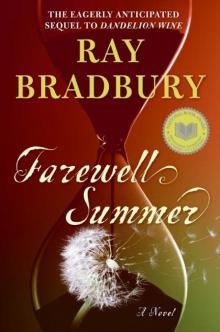 Farewell Summer gt-2
Farewell Summer gt-2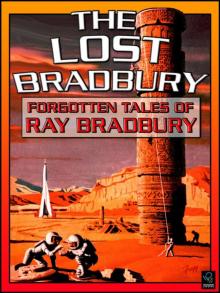 The Lost Bradbury
The Lost Bradbury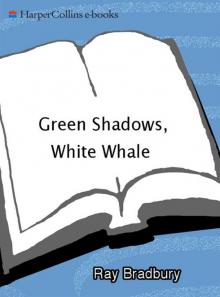 Green Shadows, White Whale
Green Shadows, White Whale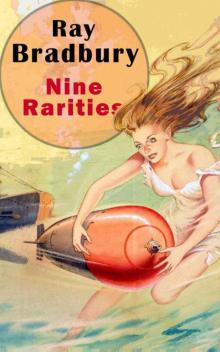 Nine Rarities
Nine Rarities The Fireman
The Fireman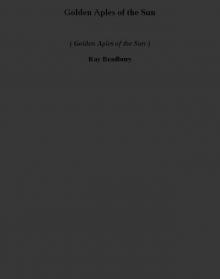 Golden Aples of the Sun (golden aples of the sun)
Golden Aples of the Sun (golden aples of the sun) We'll Always Have Paris
We'll Always Have Paris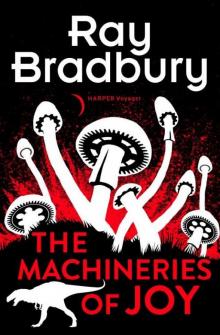 The Machineries of Joy
The Machineries of Joy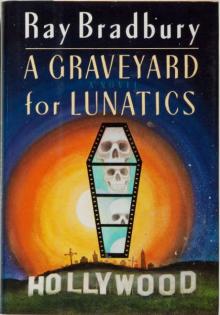 A Graveyard for Lunatics cm-2
A Graveyard for Lunatics cm-2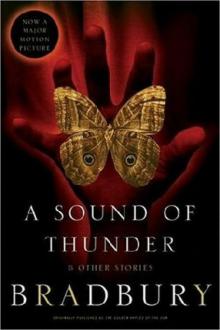 The Sound of Thunder
The Sound of Thunder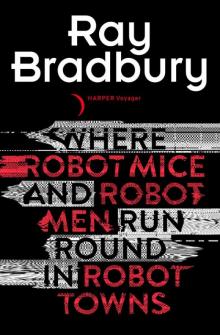 Where Robot Mice and Robot Men Run Round In Robot Towns
Where Robot Mice and Robot Men Run Round In Robot Towns